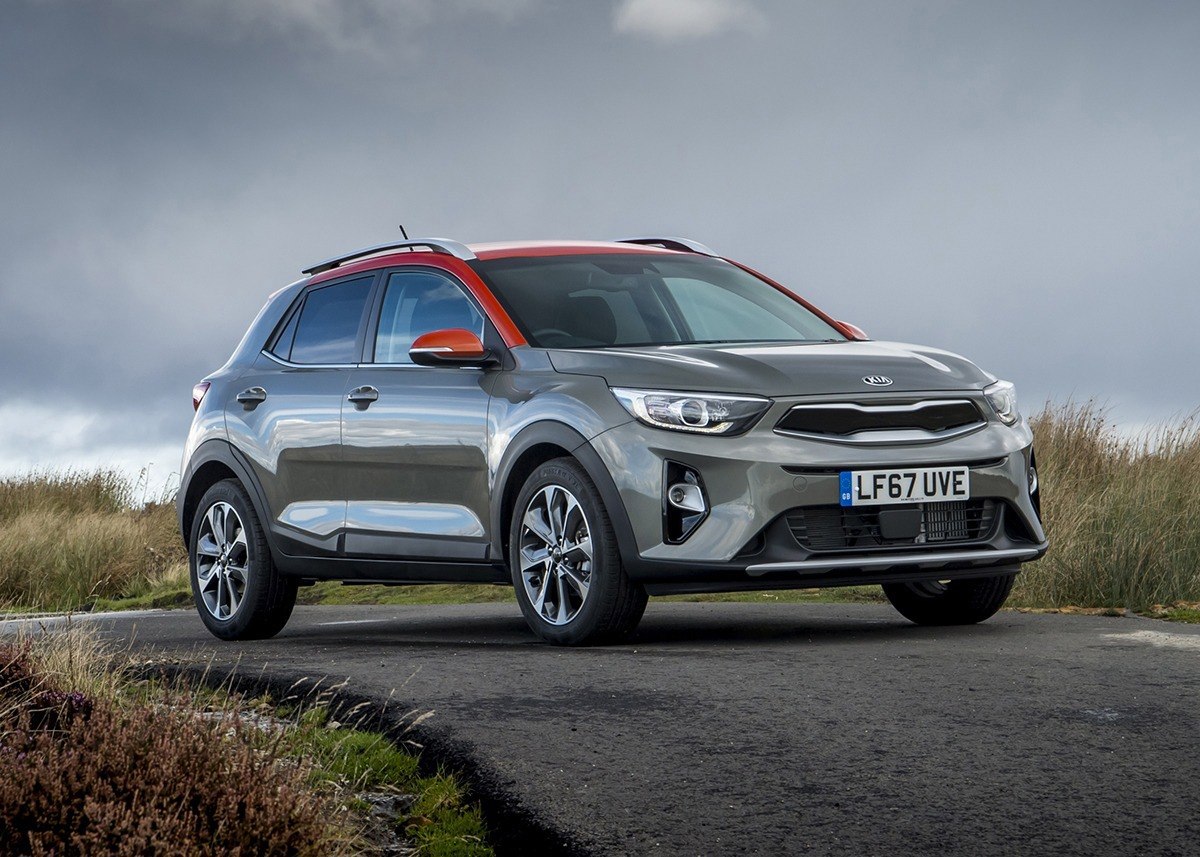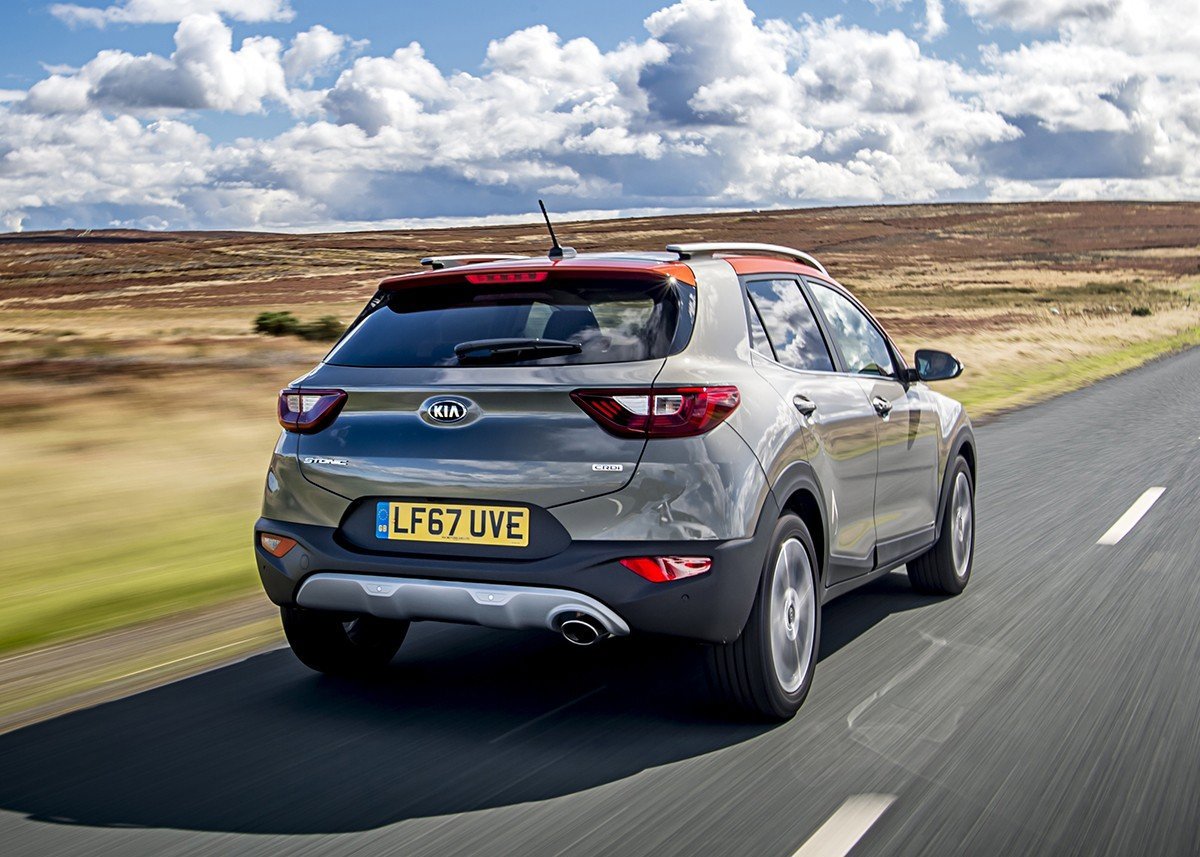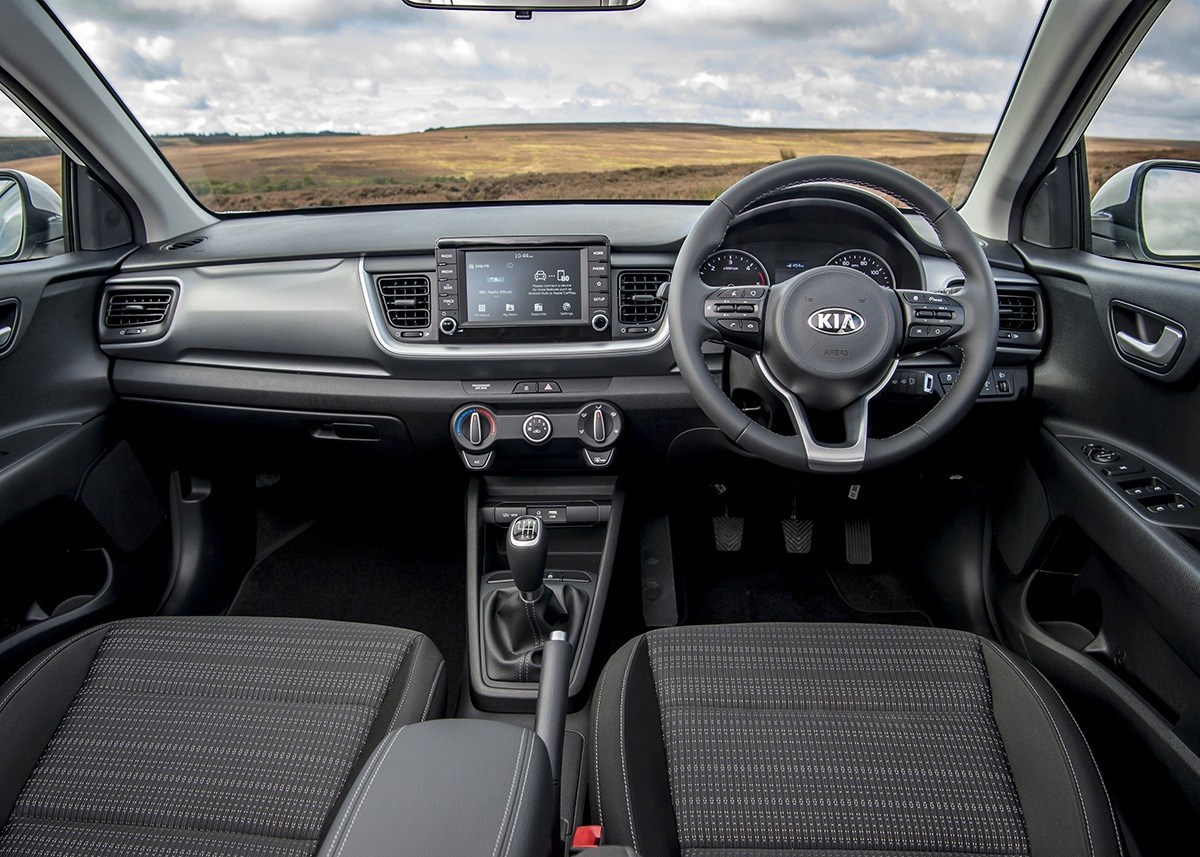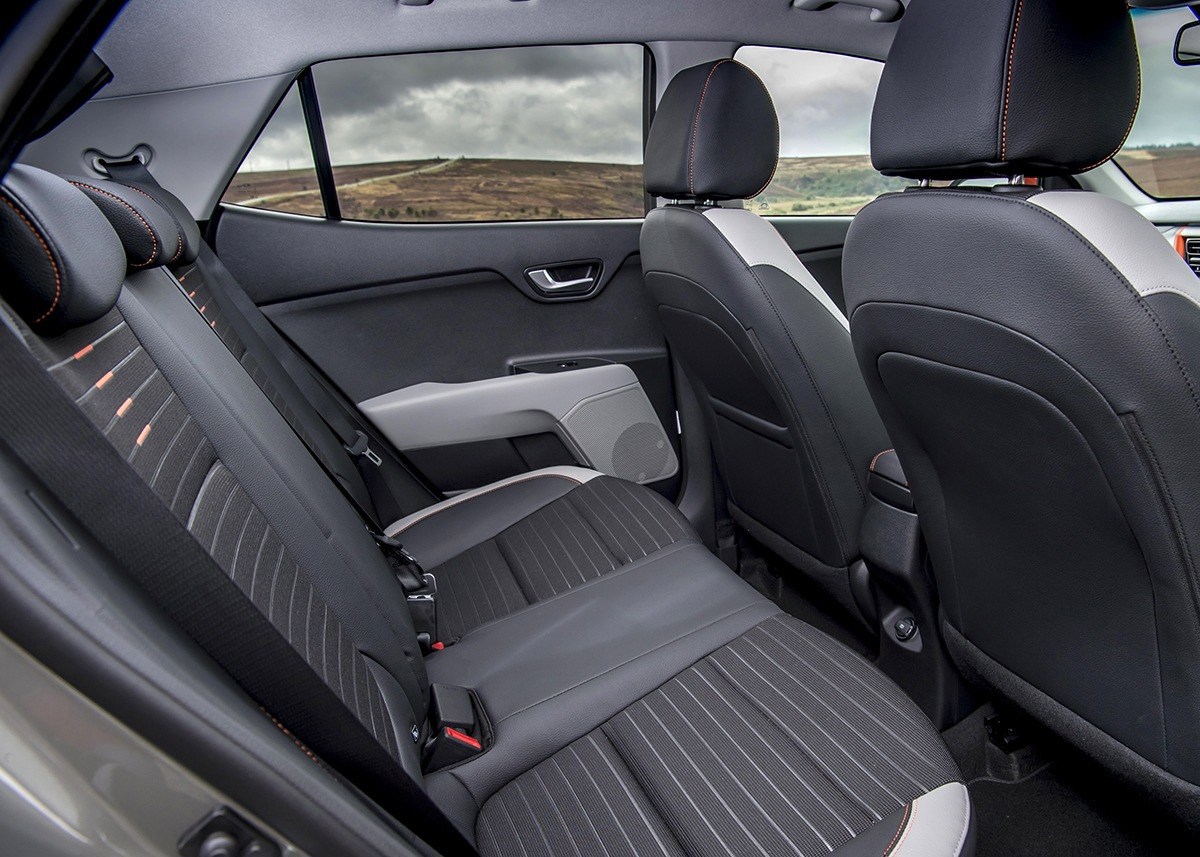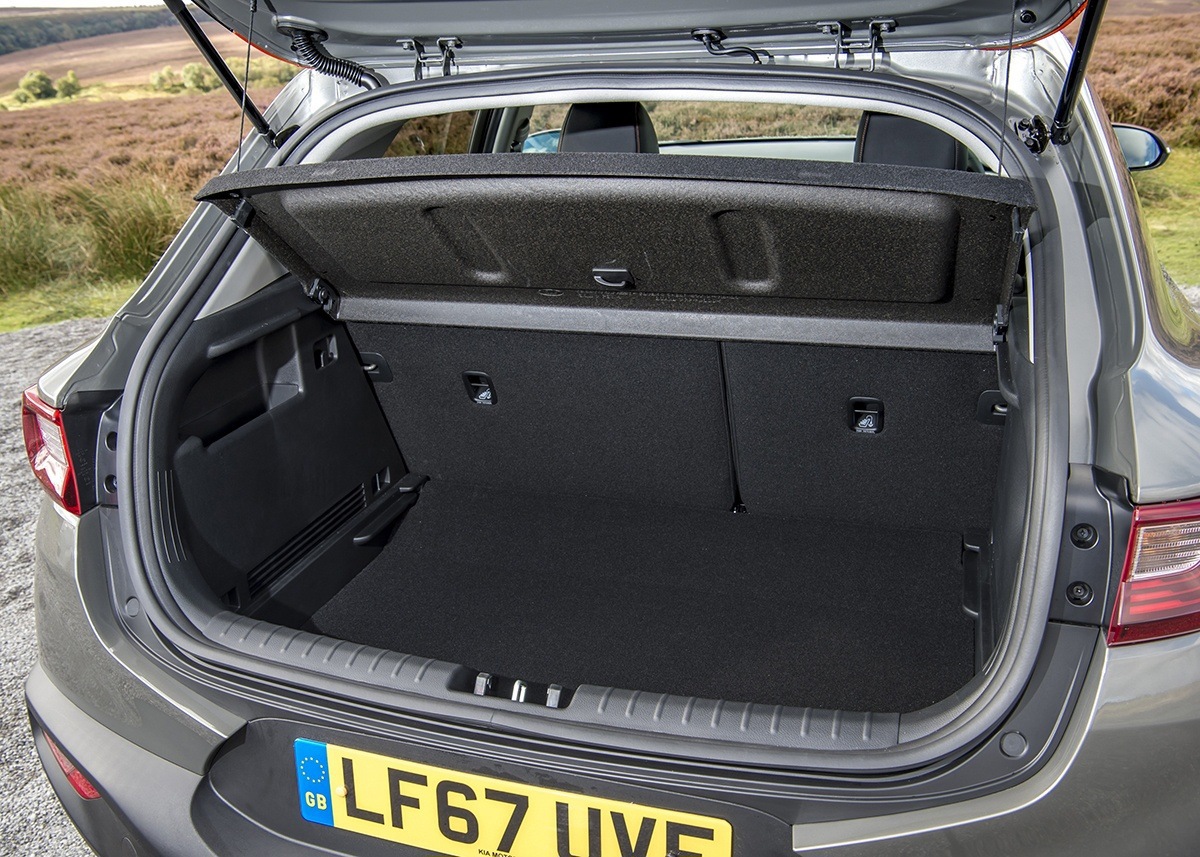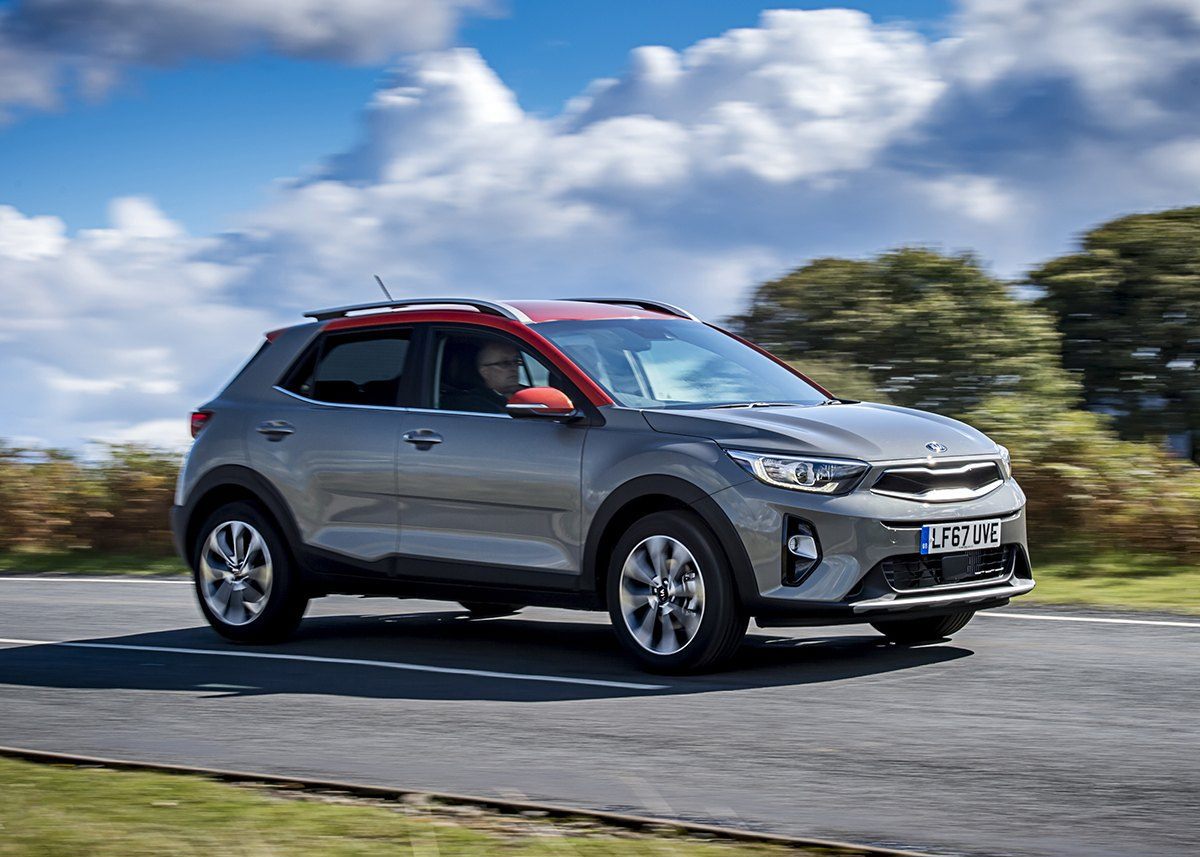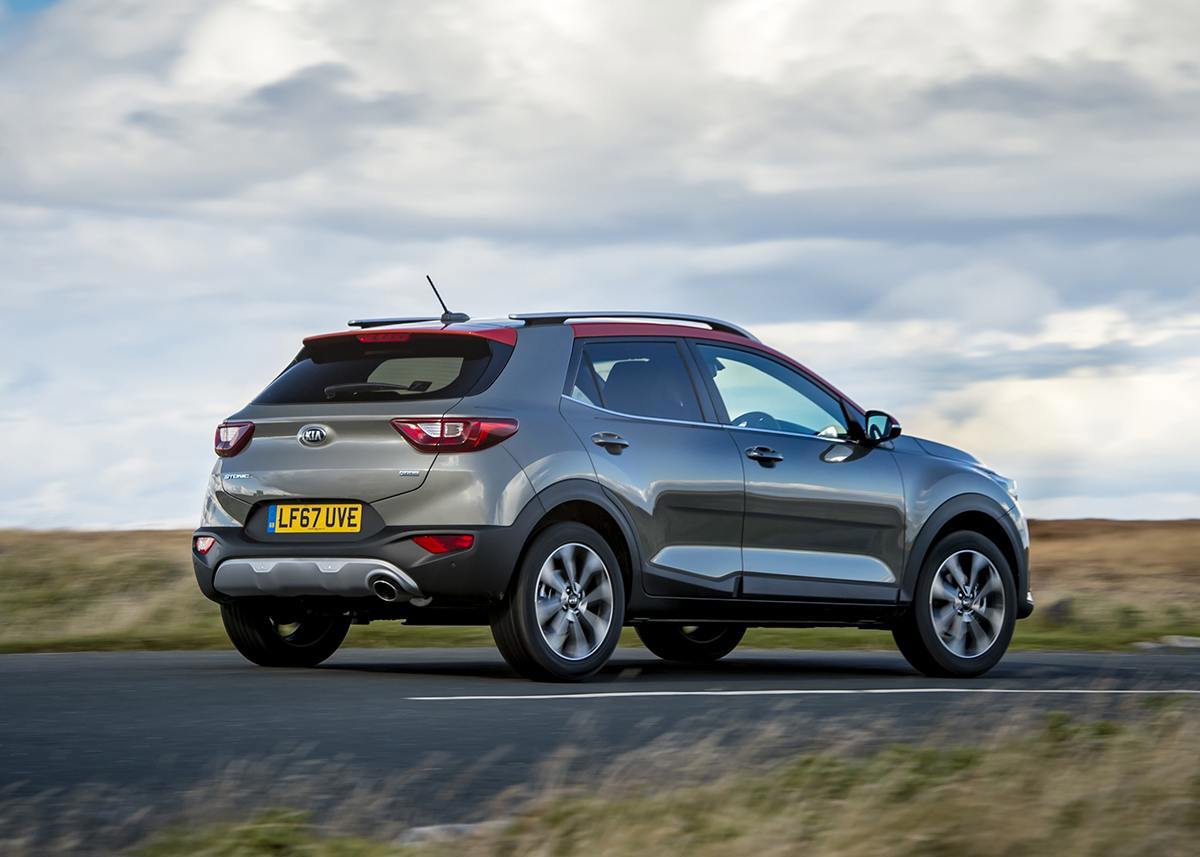Quick overview
- Value for money
- Good engines
- Seven-year warranty
- Good handling
- Small boot
- Limited rear seat space
- Poor ride on larger wheels
- Some safety kit not for lower trims
The Kia Stonic is a small SUV based on the same platform as the Rio small car, and it comes with a choice of two 1.0-litre turbo petrol engines. This keeps the line-up simple to understand and pick between, especially as the less powerful 99hp engine is only fitted to the base 2 trim model. See, we said Kia likes to do things in a straightforward fashion.
Whichever trim level you choose, the Kia Stonic is equipped with more standard kit than a great many of its rivals. With keen pricing on its side when compared to the likes of the Ford Puma or Volkswagen T-Roc, that males the Stonic a very appealing car for anyone where value for money is a key consideration. You also get Kia’s superb seven-year, 100,000-mile warranty as part of the deal for long-term peace of mind during your ownership.
What you don’t get quite so much of with the Kia Stonic is rear seat space. Being based on a supermini, it was always going to be a little more cramped in the back seats than, say, a Sportage, but the Stonic lags behind the best in the sector by a fair margin and a Skoda Kamiq is a much better bet if you have to carry teenage children or grandparents on a routine basis.
The Stonic is also far from a thrill-a-mile to drive as the ride and handling are only average for the class. Opt for the car on larger alloy wheels with the higher trims and the ride takes on a slightly uncomfortable edge. However, the Kia Stonic does have a mildly sporting feel and it also has plenty of standard safety equipment as part of its make-up to appeal to its target market of family buyers.
Prices
Prices for the Kia Stonic range get going at £19,700 for the 2 trim, which pitches the Kia very keenly against its main rivals like the Renault Captur and SEAT Arona. Next in range is the GT-Line that costs from £22,250, while the Connect comes in at £22,700, and the line-up is rounded off by the GT-Line S at £23,750. Savings of between £1000 and £1750 are achievable on a brand new Kia Stonic, though this depends on which trim level you choose, with bigger savings on the more expensive models possible. A nearly new Stonic with around 3000 miles can be had from £17,000, which is a useful saving over the new list price. Go for a three-year old Stonic with average mileage and you should pay from £13,000.
Infotainment, comfort and practicality
It’s a tale of two halves in the Kia Stonic’s cabin when it comes to space and comfort. Let’s look at the front half of the equation first, which is the good bit. As the Stonic is based on the Rio supermini, you get a slightly lower-set driving position than in many small SUV, such as the Renault Captur or SEAT Arona. Once you get used to this, the Kia’s driving position is comfortable and offers plenty of room, and the view out is unhindered by sitting a bit closer down to the road than its key rivals. Every trim version comes with height adjustment for the driver’s seat, and the steering wheel moves for both depth and reach, so you can vary the seating arrangement to your heart’s content. With the position how you like it, there’s good head, leg and shoulder space in the front quarters. Good all-round vision is augmented by standard rear parking sensors on all Stonic variants, and the upper three trim levels all comes with reversing camera too.
Quality in the Stonic is among the better in this sector of car, and the clear, simple design of the main dash display is a lesson in clarity for several of the Kia’s rivals. In between the round instruments for revs and speedo sits a 4.2-inch supervision cluster that lets you scroll through various menus of information about fuel consumption, travel data, radio station and so on. There are steering wheel buttons for this, while in the middle of the dash there are simple round dials to operate the heating and ventilation, so this is big plus for the Stonic. There’s also a decent amount of storage centred around the driver with its door bins, oddments tray in the centre console, glovebox, and cupholders.
Above the heating controls lies the Stonic’s 8.0-inch colour touchscreen infotainment display. This remains one of the better systems fitted to a small SUV or just about any car on the market. Much of this is down to the quick reactions of the screen when you tap an icon on it, and the rest is due to it retaining some physical buttons and dials to make it much easier to navigate your way through the menus and options. It also makes it far easier to use as you’re driving. The 2 trim comes with Apple CarPlay or Android Auto connectivity, and voice control, while the higher trims add integrated sat-nav to the mix.
Now we come to the other half of the Kia Stonic’s cabin offering and things are not quite so rosy for those who find themselves sat in the back. Children will be just about okay whiling away a journey, but adults will come to rue the decision to sit back here. There simply isn’t enough knee room for most people to get comfy. Head room is good, admittedly, but the Stonic’s rear seat width means even two adults back here are rubbing shoulders. Try to cram three adults in the back and you’ll have a riot on your hands. Still, there are Isofix child seat mounts on the two outer rear pews to securely attach kiddy chairs in the Stonic.
Step round to the boot and the underwhelming performance of the Stonic continues. The boot is bigger than the Rio’s its based on, but still a far way off the class best with a load capacity of 352-litres. Fold the 60-40 split and top rear seat back down and you can free up as much as 1155-litres, but that’s still come way short of a Nissan Juke’s cargo maximum. The Stonic is also hindered by the drop from load sill to boot floor, without even the option of a height adjustable floor. With the back seats tilted forward, there’s a bit step in the floor where the seats hinge, sliding in longer loads is a faff.
Which 2017 Kia Stonic model should you buy?
There’s no denying the Kia Stonic is well equipped and the entry-point 2 trim proves this point. It comes with 16-inch alloy wheels, electrically heated and folding door mirrors, electric windows all-round, air conditioning, and cloth upholstery. It also has rear parking sensors, cruise control with speed limiter, and six airbags plus automatic emergency braking, lane keep assist, and a driver attention warning. There’s also the 8.0-inch infotainment touchscreen with Apple CarPlay and Android Auto connectivity with voice control. Move to the GT-Line and you gain 17-inch alloys, sporty body kit, integrated sat-nav, rear privacy glass, reversing camera, and climate automatic air conditioning. The Connect trim trades the GT-Line’s sporty looks for faux leather upholstery and rain-sensing wipers. At the top of the pile is the GT-Line S with contrasting roof colour scheme, smart cruise control, keyless entry and ignition, heated front seats and steering wheel, front parking sensors, and blind spot warning.
Value for money: how much does a 2017 Kia Stonic cost to buy and run?
Given the two engines in the Kia Stonic are both 1.0-litre units working through a six-speed manual gearbox, it’s no great shock to find they have similar running costs. The 99hp motor offers 51.4mpg and 125g/km of carbon dioxide emissions. Go for the 118hp motor and it’s 1mpg less fuel efficient on the combined cycle, and emits 2g/km more CO2. As a consequence, both engines fall into the £190 bracket for first-year VED road tax. As for insurance, the Stonic range occupies anywhere between groups 10 and 14 based on which trim level you choose.
Verdict: Should I buy a 2017 Kia Stonic?
Kia doesn’t hold back when it comes to the standard equipment count in the Stonic. It also comes with a good deal of safety kit as standard too, though only the top GT-Line S has blind spot recognition tech. The 1.0-litre engines are willing and able accomplices to easy town and motorway driving, and the Kia is also more fun than most when the road starts to weave through the countryside.
Where the Stonic falls behind the class leaders is the amount of rear passenger space and load capacity it offers. Both are some way off the best in this sector. If these aren’t prime concerns for you, the keenly priced Stonic is worthy of making it on to your short list. For family buyers, there are better options, however.


